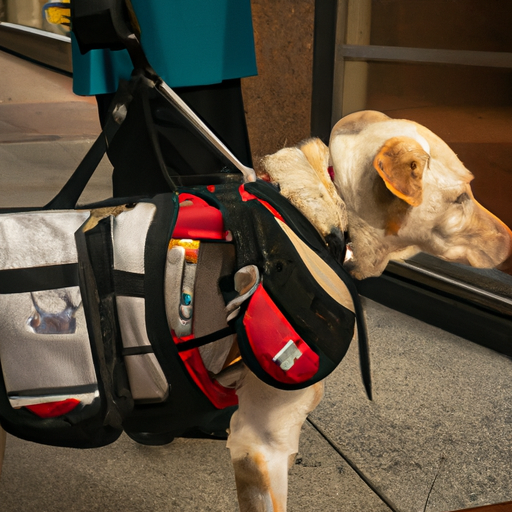Service dogs are more than just pets; they are specially trained companions that can significantly improve the quality of life for individuals with disabilities. But what exactly can these dogs do? Let’s delve into the specifics.
1. Assistance with Physical Tasks
Service dogs can be trained to perform a variety of physical tasks that can make life easier for people with physical disabilities.
-
Mobility Assistance: Dogs can be trained to help with mobility issues. They can pull a wheelchair, help someone balance, pick up dropped items, and even press buttons or switches.
-
Medical Alert: Dogs can also be trained to alert their handler to certain medical conditions. For example, they can detect low blood sugar in people with diabetes or an oncoming seizure in people with epilepsy.
| Task | Service Dog Breeds Commonly Trained |
|---|---|
| Mobility Assistance | Labrador Retrievers, Golden Retrievers |
| Medical Alert | German Shepherds, Border Collies |
2. Emotional and Psychological Support
For those dealing with mental health issues, service dogs can offer emotional and psychological support.
-
Emotional Support: Dogs are known for their ability to relieve stress and anxiety. For someone with a mental health disorder, a service dog can offer a calming presence.
-
Psychiatric Service Dogs: These dogs are specifically trained to detect and lessen the effects of psychiatric episodes.
3. Helping Those with Autism
Service dogs can be of enormous help to individuals with Autism, especially children.
-
Sensory Processing: These dogs can help redirect repetitive behaviors, which can be soothing for a person with Autism.
-
Safety: Service dogs can prevent a child with Autism from wandering off and can guide them away from dangerous situations.
4. Assistance for the Visually Impaired
Guide dogs for the visually impaired are perhaps the most well-known type of service dog.
-
Navigation: These dogs help their handlers navigate their environment, avoiding obstacles both static and dynamic.
-
Signal Changes: Guide dogs can signal changes in elevation, like curbs or stairs, and can locate and lead their handler to specific locations when instructed.
5. Hearing Dogs for the Deaf
Hearing dogs assist individuals who are deaf or hard of hearing.
-
Alert to Sounds: These dogs are trained to alert their handler to essential sounds like doorbells, alarm clocks, or a baby crying.
-
Safety: They can also warn their handler of approaching dangers like sirens or fire alarms.
Frequently Asked Questions
Q: How are service dogs trained?
A: Service dogs undergo rigorous training often from puppyhood, under professional trainers specializing in the field.
Q: Can service dogs go anywhere?
A: Yes, service dogs are legally allowed to accompany their handler in any place that is open to the public.
Q: How do I get a service dog?
A: There are numerous organizations that train and provide service dogs. You would need to apply through one of these organizations.
Q: Can any dog become a service dog?
A: While any breed can technically become a service dog, certain breeds are more suited to specific tasks due to their physical abilities and temperament.
This piece aims to highlight the crucial role service dogs play in enhancing the lives of their handlers. They are more than just companions; they are lifelines offering assistance, support, and independence.



